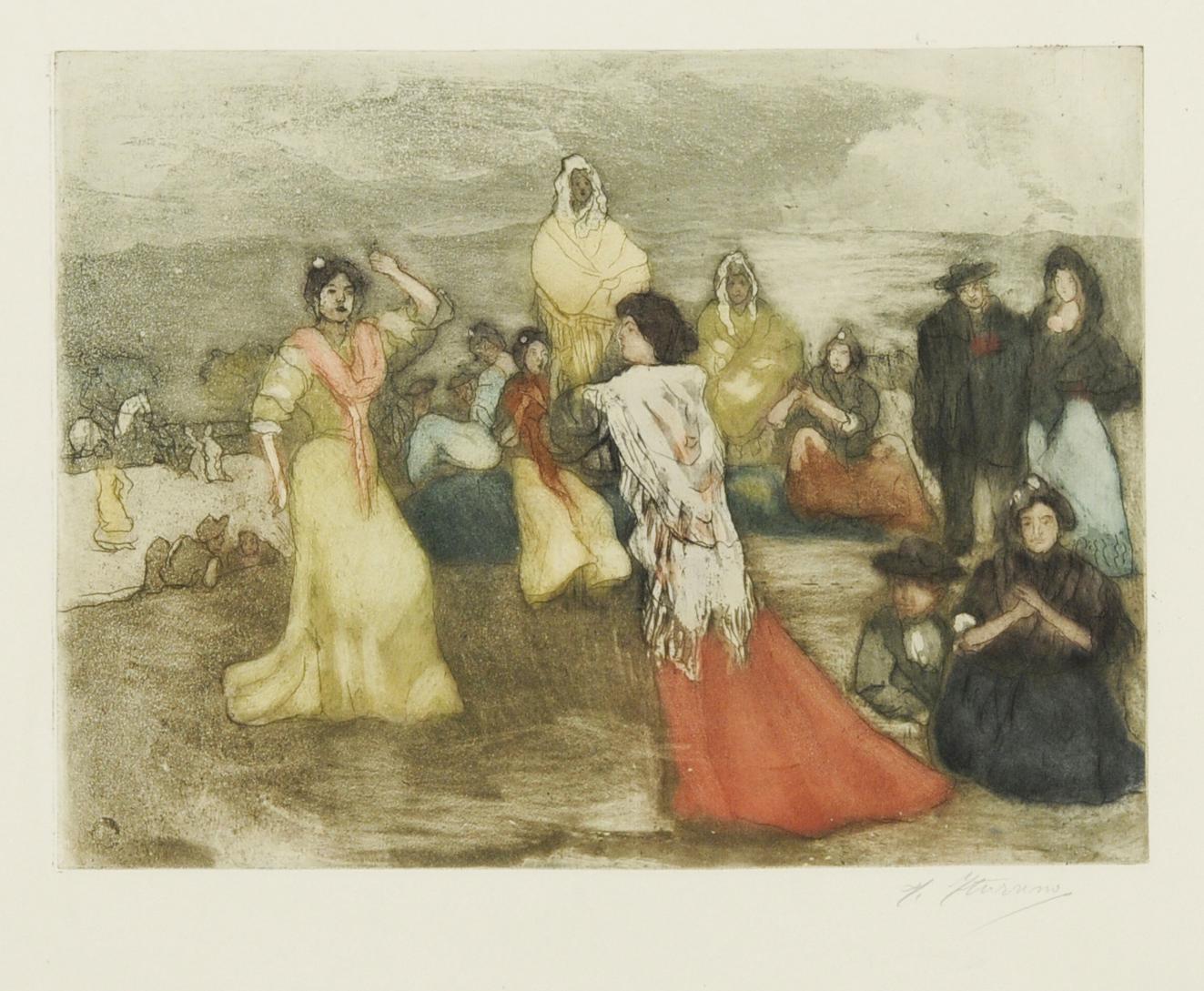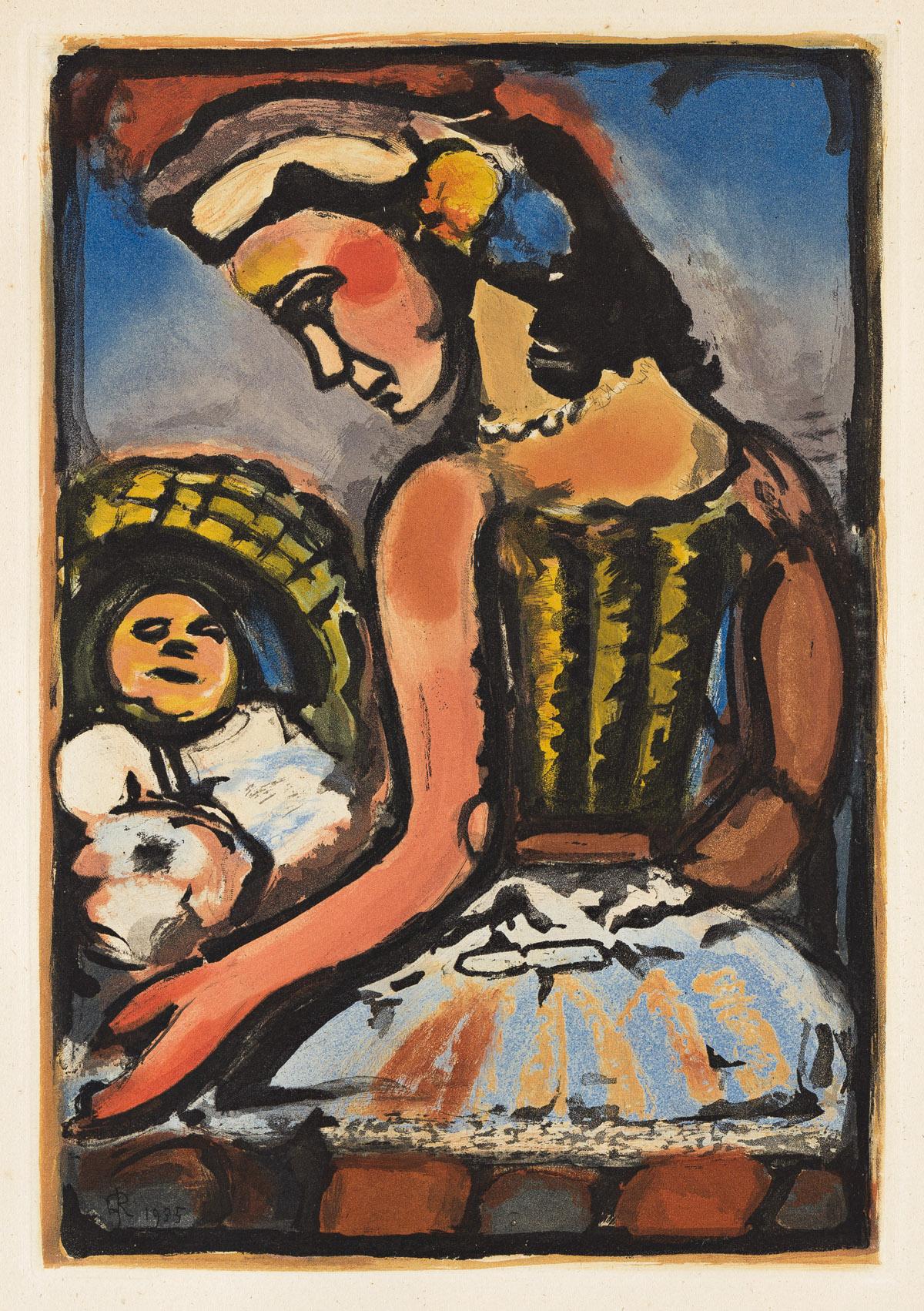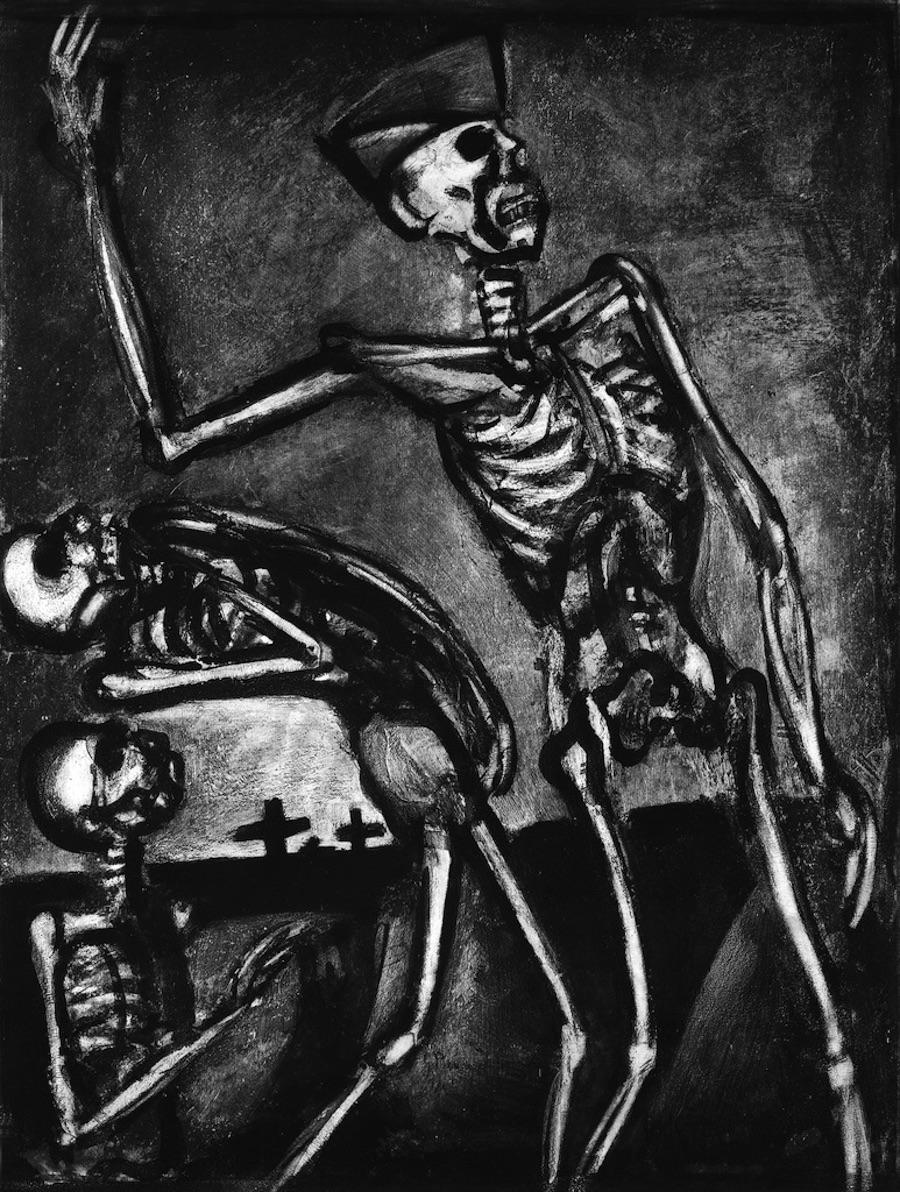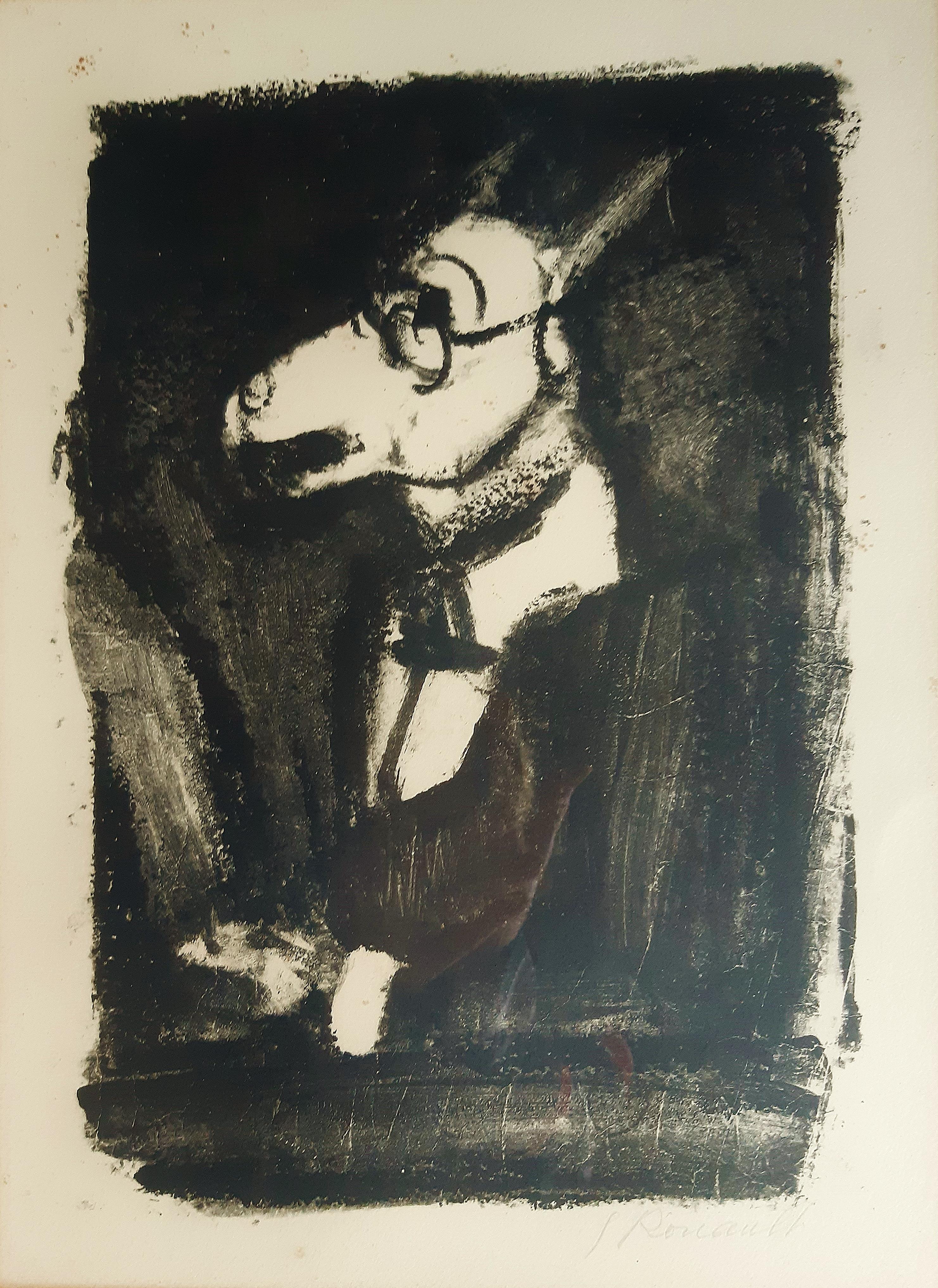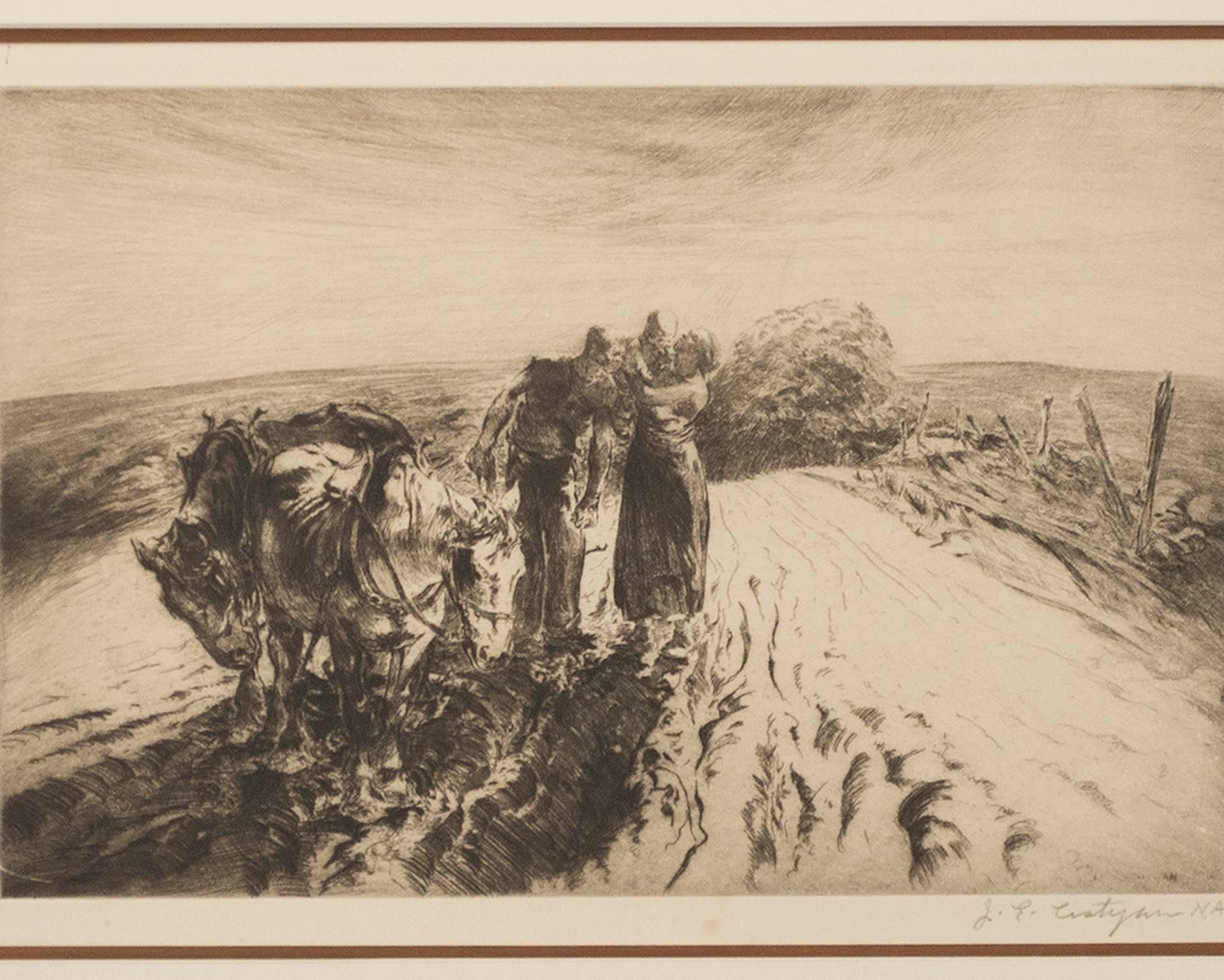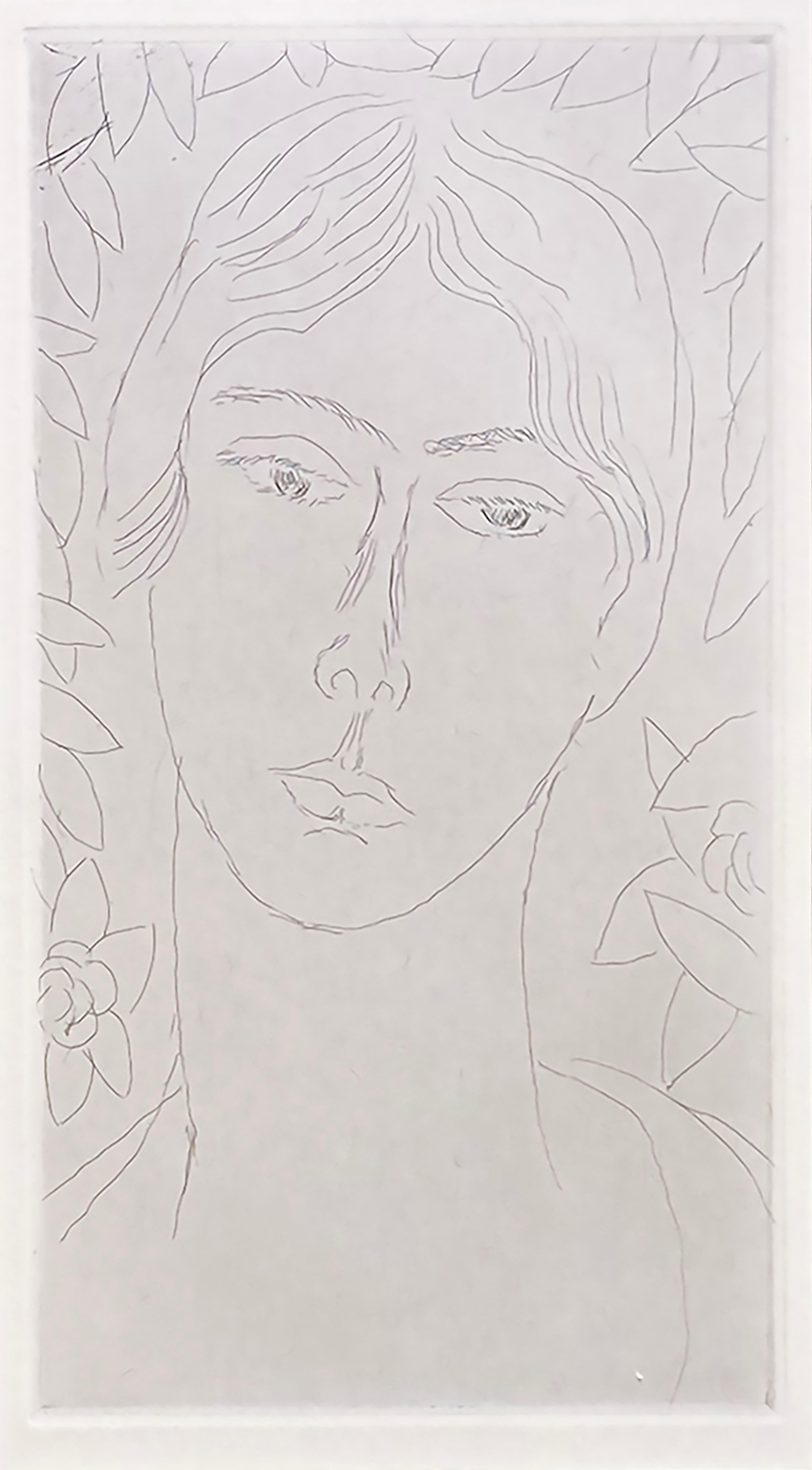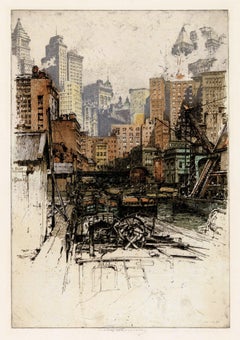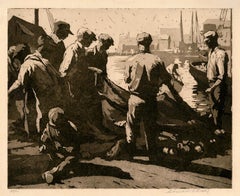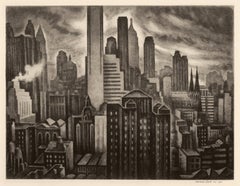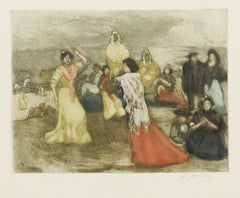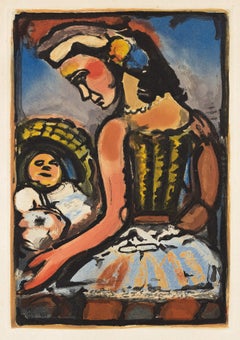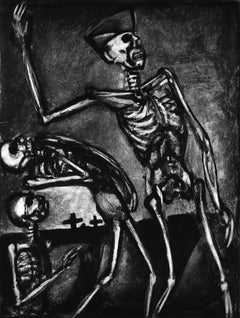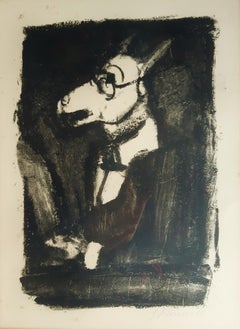Items Similar to 'Erinnerung (Remembrance)' — Turn-of-the Century Romanticism
Want more images or videos?
Request additional images or videos from the seller
1 of 3
Max Klinger'Erinnerung (Remembrance)' — Turn-of-the Century Romanticism1896
1896
About the Item
Max Klinger, 'Erinnerung' (Remembrance), original etching with aquatint, 1896. A fine, richly inked impression on off-white, wove paper, with full margins (1 3/4 to 3 1/8 inches), in excellent condition. Published as an insert in 'Pan', II, 1896, the leading German magazine of the period devoted to art and literature, the artist’s name and the title is printed in letterpress, in the bottom, left sheet corner. Matted to museum standards, unframed.
Image size 9 3/4 x 4 11/16 inches (248 x 119 mm); sheet size 14 1/8 x 11 inches (359 x 279 mm).
Impressions of this work are in the collections of the Los Angeles County Museum of Art, the Metropolitan Museum of Art, and the National Gallery of Australia.
ABOUT THE ARTIST
"Among the most prolific and creative printmakers of his era, the German artist Max Klinger (1857–1920) revived printmaking in his native country at a time when it struggled to overcome industrial connotations. During the closing decades of the nineteenth century, he was celebrated for his use of the graphic arts to explore imaginative subjects related to myth and fantasy. Born into an upper-middle-class family in Leipzig, Klinger began to study drawing at a young age. Although he would maintain accomplished practices in various media—including painting, drawing, and sculpture—Klinger’s reputation rested on his experiments in intaglio printmaking. In particular, he often produced these prints as series (“cycles,” as he termed them) that varied from gritty naturalism to esoteric symbolism in content and would influence a generation of printmakers in Germany and beyond over the ensuing century."
—METROPOLITAN MUSEUM OF ART
- Creator:Max Klinger (1857 - 1920)
- Creation Year:1896
- Dimensions:Height: 9.75 in (24.77 cm)Width: 4.69 in (11.92 cm)
- Medium:
- Movement & Style:
- Period:
- Condition:
- Gallery Location:Myrtle Beach, SC
- Reference Number:Seller: 1023211stDibs: LU53234227011
About the Seller
5.0
Recognized Seller
These prestigious sellers are industry leaders and represent the highest echelon for item quality and design.
Platinum Seller
Premium sellers with a 4.7+ rating and 24-hour response times
Established in 1995
1stDibs seller since 2016
299 sales on 1stDibs
Typical response time: 1 hour
Associations
International Fine Print Dealers Association
- ShippingRetrieving quote...Shipping from: Myrtle Beach, SC
- Return Policy
Authenticity Guarantee
In the unlikely event there’s an issue with an item’s authenticity, contact us within 1 year for a full refund. DetailsMoney-Back Guarantee
If your item is not as described, is damaged in transit, or does not arrive, contact us within 7 days for a full refund. Details24-Hour Cancellation
You have a 24-hour grace period in which to reconsider your purchase, with no questions asked.Vetted Professional Sellers
Our world-class sellers must adhere to strict standards for service and quality, maintaining the integrity of our listings.Price-Match Guarantee
If you find that a seller listed the same item for a lower price elsewhere, we’ll match it.Trusted Global Delivery
Our best-in-class carrier network provides specialized shipping options worldwide, including custom delivery.More From This Seller
View All'Brooklyn Bridge' — Iconic New York City Landmark
By Luigi Kasimir
Located in Myrtle Beach, SC
Luigi Kasimir, 'Brooklyn Bridge', color etching with aquatint, 1927, edition 100. Signed in pencil.
A superb impression, with fresh colors, on heavy, cream wove paper; with margins...
Category
1920s American Modern Landscape Prints
Materials
Etching, Aquatint
'Coenties Slip' — Lower Manhattan, Financial District
By Luigi Kasimir
Located in Myrtle Beach, SC
Luigi Kasimir, 'Coenties Slip', color etching with aquatint, 1927, edition 100. Signed in pencil. Dated in the plate, lower right. Annotated 'NEW YORK HANOVER SQUARE (COENTIES SLIP)'...
Category
1920s American Modern Landscape Prints
Materials
Etching, Aquatint
'Mending Nets' — Cape Ann Regionalism, Rockport
Located in Myrtle Beach, SC
Christian Dull, 'Mending Nets', aquatint, c. 1930, edition 50. Signed and numbered '50/-' in pencil. A fine impression, on cream laid paper, the full sheet with margins (1/2 to 1 1/2...
Category
1920s American Modern Figurative Prints
Materials
Aquatint
'Soaring New York' — 1930s American Modernism, New York City
By Howard Norton Cook
Located in Myrtle Beach, SC
Howard Cook, 'Soaring New York', aquatint, soft-ground etching, roulette, 1931-32, edition 25, Duffy 165. Signed, dated, and annotated 'imp' in pencil. A superb, richly-inked, atmosp...
Category
1930s American Modern Figurative Prints
Materials
Etching, Aquatint
'Tropical Wash Day' — Mid-Century Modernism
Located in Myrtle Beach, SC
'Tropical Wash Day', aquatint, edition 100, 1946. Signed in pencil. Signed and dated in the plate, lower left. A superb, richly-inked impression, on heavy cream wove paper, with full...
Category
1940s American Modern Figurative Prints
Materials
Aquatint
Rumba de las Fauna
By E.P. Marquié
Located in Myrtle Beach, SC
Aquatint, 1932, edition unknown. Signed, dated, and titled in pencil. Image size 7 3/8 x 6 3/8 inches (187 x 162 mm); sheet size 12 1/4 x 11 3/8 inches (311 x 289 mm). A fine impression, in rich sepia ink, on cream wove paper, with wide margins (2 3/8 to 2 1/2 inches); in excellent condition. Scarce.
A beautifully composed cubist work depicting urban Rumba revelers, possibly inspired by a New Orleans Rumba Night scene.
Little biographical information is available about E. P. Marquié. The artist created numerous miniature-format etchings of New York...
Category
Mid-20th Century Modern Figurative Prints
Materials
Aquatint
You May Also Like
Sevillanas
Located in Fairlawn, OH
Sevillanas
Etching and color aquatint on laid watermarked paper, c. 1900
Signed by the artist in pencil lower right (see photo)
Editioned in pencil lower left corner of sheet
Publish...
Category
Early 1900s Post-Impressionist Figurative Prints
Materials
Aquatint
Dors mon amour
By Georges Rouault
Located in New York, NY
A superb impression of this color aquatint. From an unnumbered edition of 280. Printed by Lacouriere, Paris. Published by Vollard, Paris. From "Cirque de l'Étoile Filante."
Catalogu...
Category
1930s Fauvist Abstract Prints
Materials
Color, Aquatint
Debout les Morts - Etching and Aquatint by G. Rouault - 1948
By Georges Rouault
Located in Roma, IT
Debout les morts is an original etching, drypoint, burnisher and roulette realized by Georges Rouault in 1948, signed in plate, watermark Ambroise Vollard, plate 54 from “Miserere”, edition 450 copies.
Included a frame.
In very good conditions.
The artwork demonstrates three skeletons that are scared and in miserable expression, two of them in the fear of third one, who stands with a hand upward in the air.
Georges Henri Rouault (1871-1958) was a French painter, print maker artist, his artworks are often associated with Fauvism and Expressionism. He is well known for paintings dedicated to courts, clowns and prostitutes. He was inspired by spirituality and knowledge of medieval stained glass...
Category
1940s Post-Impressionist Figurative Prints
Materials
Etching, Aquatint
L’Ane - Original Etching and Aquatint by G. Rouault - 1927
By Georges Rouault
Located in Roma, IT
L’Ane is an original lithograph, realized by Georges Rouault in 1927, hand signed, Ambroise Vollard's stamp, trial proof of the first state, printed in 10 copies.
Included a frame.
In very good conditions.
The artwork demonstrates a man-donkey creature dressed in suit formally and with a glasses.
Georges Henri Rouault (1871-1958) was a French painter, print-maker artist, his artworks are often associated with Fauvism and Expressionism. He is well-known for paintings dedicated to courts, clowns and prostitutes. He was inspired by spirituality and knowledge of medieval stained glass...
Category
1920s Post-Impressionist Figurative Prints
Materials
Etching, Aquatint
"When Day is Done, " an Original Etching signed by John Edward Costigan
By John Edward Costigan
Located in Milwaukee, WI
"When Day is Done" is an original etching and aquatint signed lower right in pencil by the artist John Edward Costigan. It depicts a man and a woman with their young child at the end...
Category
1930s Post-Impressionist Figurative Prints
Materials
Etching, Aquatint
"Mlle Landsberg" (grade planche, pl. 16)
By Henri Matisse
Located in Missouri, MO
"Mlle Landsberg" (grade planche, pl. 16), 1914
Henri Matisse (French, 1869-1954)
Signed and Numbered Lower Right
Edition 12/15
Image size: 7 7/8 x 4 5/16 inches
Sheet size: 17 11/16 x 12 1/2 inches
With frame: 19 1/2 x 14 1/2 inches
Henri Matisse came from a family who were of Flemish origin and lived near the Belgian border. At eight o'clock on the evening of December 31, 1869, he was born in his grandparents' home in the town of Le Cateau in the cheerless far north of France. His father was a self-made seed merchant who was a mixture of determination and tightly coiled tension.
Henri had no clear idea of what he wanted to do with his life. He was a twenty-year-old law clerk convalescing from appendicitis when he first began to paint, using a box of colors given to him by his mother. Little more than a year later, in 1890, he had abandoned law and was studying art in Paris. The classes consisted of drawing from plaster casts and nude models and of copying paintings in the Louvre. He soon rebelled against the school's conservative atmosphere; he replaced the dark tones of his earliest works with brighter colors that reflected his awareness of Impressionism. Matisse was also a violinist; he took an odd pride in the notion that if his painting eye failed, he could support his family by fiddling on the streets of Paris.
Henri found a girlfriend while studying art, and he fathered a daughter, Marguerite, by her in 1894. In 1898 he married another woman, Amelie Parayre. She adopted the beloved Marguerite; they eventually had two sons, Jean, a sculptor and Pierre who became an eminent art dealer. Relations between Matisse and his wife were often strained. He often dallied with other women, and they finally separated in 1939 over a model who had been hired as a companion for Mme. Matisse. She was Madame Lydia, and after Mme. Matisse left, she remained with Matisse until he died.
Matisse spent the summer of 1905 working with Andre Derain in the small Mediterranean seaport of Collioure. They began using bright and dissonant colors. When they and their colleagues exhibited together, they caused a sensation. The critics and the public considered their paintings to be so crude and so roughly crafted that the group became known as Les Fauves (the wild beasts).
By 1907, Matisse moved on from the concerns of Fauvism and turned his attention to studies of the human figure. He had begun to sculpt a few years earlier. In 1910, when he saw an exhibition of Islamic art, he was fascinated with the multiple patterned areas and adapted the decorative universe of the miniatures to his interiors. As a continuation of his interest in the "exotic", Matisse made extended trips to Morocco in 1912 and 1913.
At the end of 1917, Matisse moved to Nice; he would spend part of each year there for the remainder of his life. A meticulous dandy, he wore a light tweed jacket amd a tie when he painted. He never used a palette, but instead squeezed his colors on to plain white kitchen dishes...
Category
1910s Fauvist Figurative Prints
Materials
Drypoint, Etching
Price Upon Request
